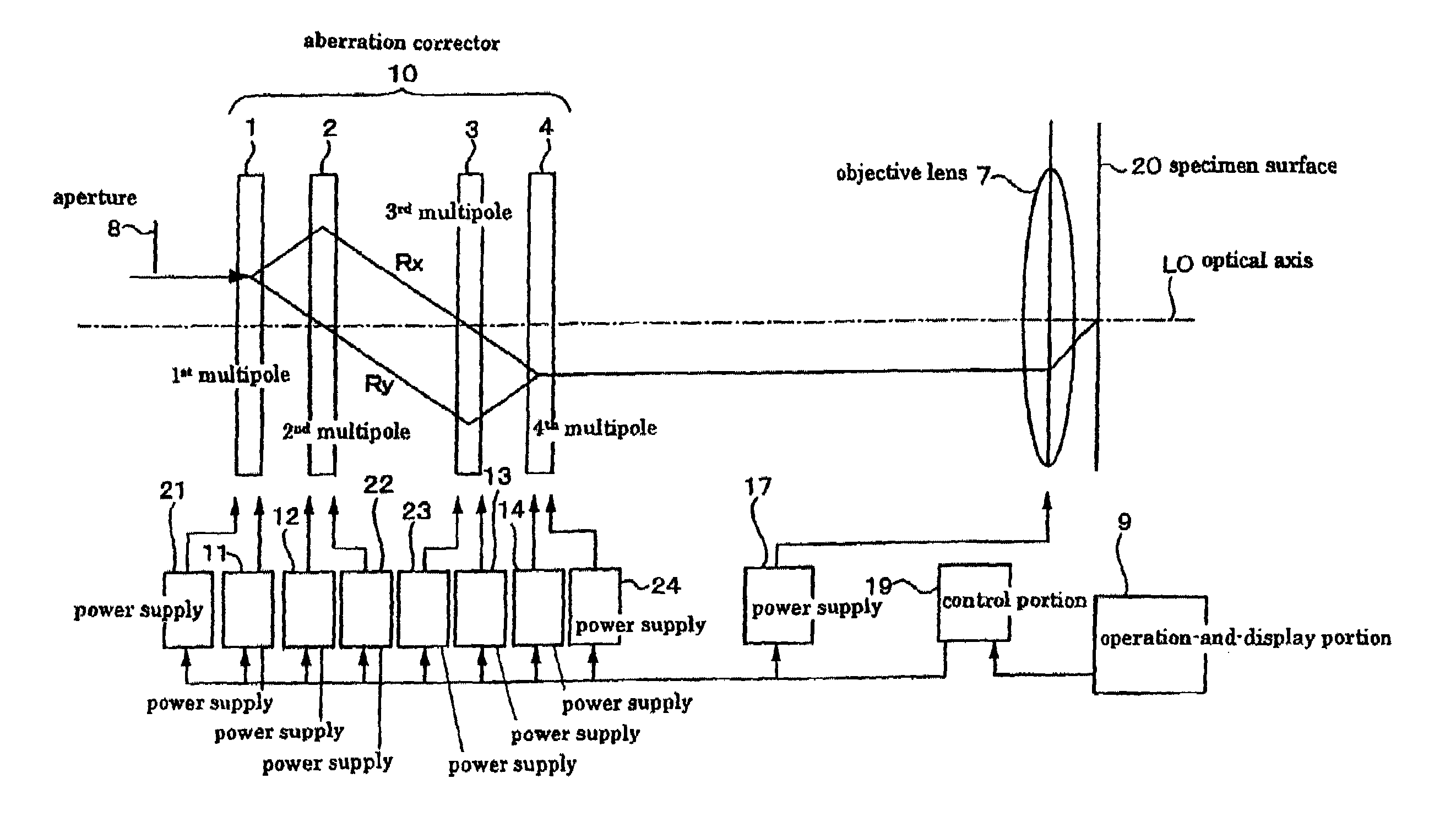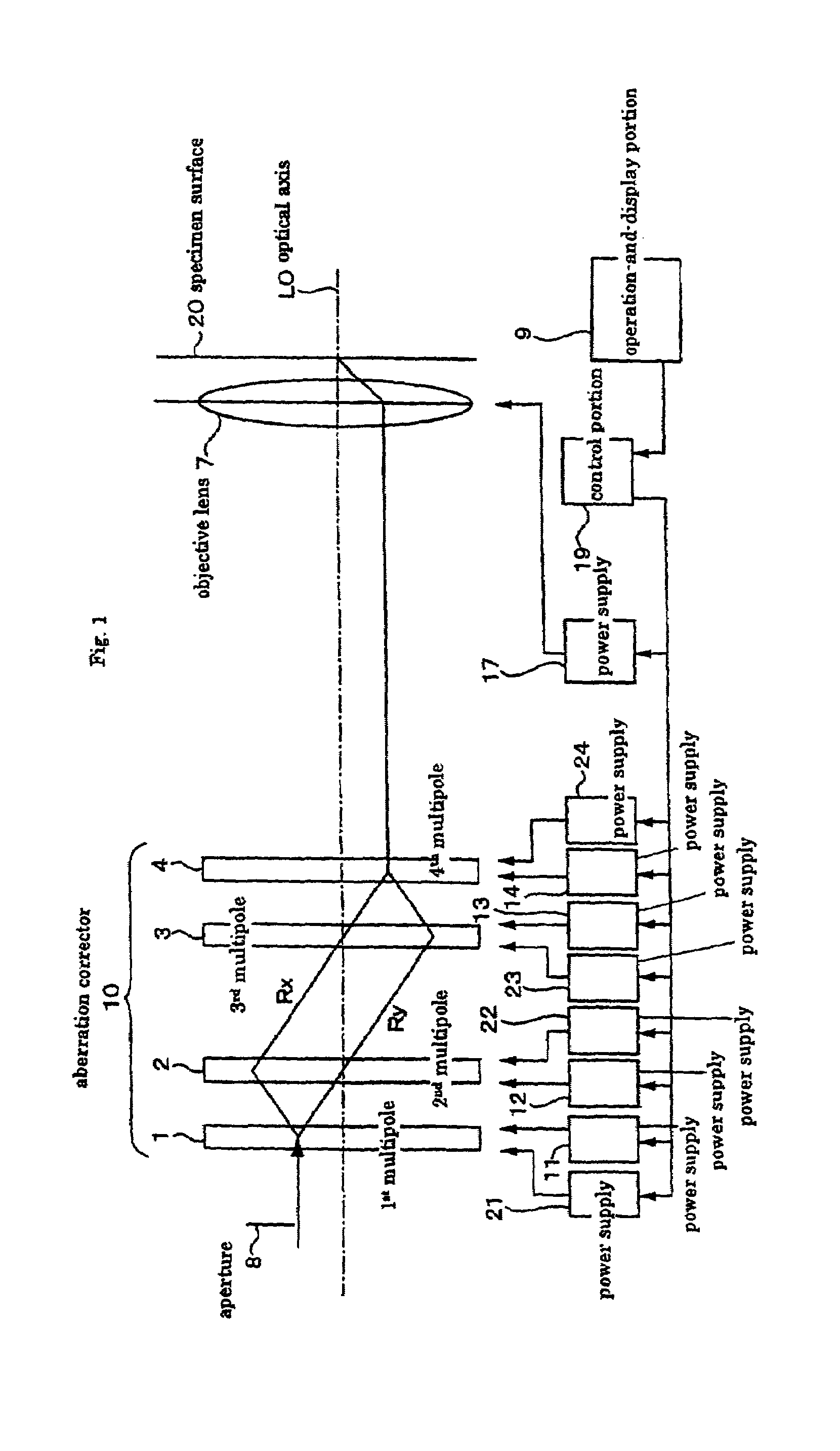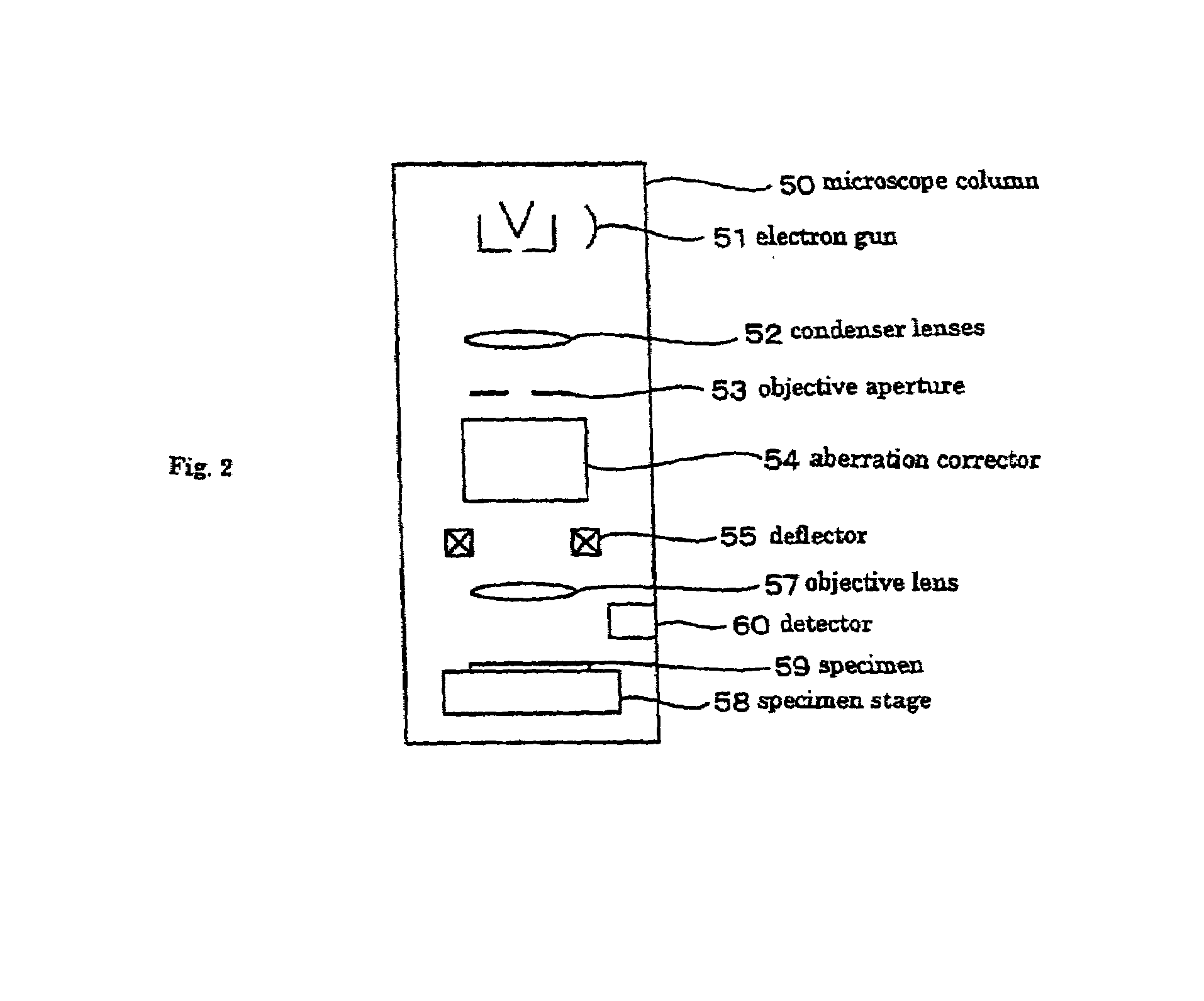Charged-particle optical system
a technology of optical systems and charged particles, applied in the direction of instruments, heat measurement, beam deviation/focusing by electric/magnetic means, etc., can solve the problems of aberration corrector, parasitic aberration, and insufficient consideration of achieving still small probes
- Summary
- Abstract
- Description
- Claims
- Application Information
AI Technical Summary
Benefits of technology
Problems solved by technology
Method used
Image
Examples
first embodiment
[0055]FIG. 1 shows a charged-particle optical system according to the invention. In this and following embodiments, charged-particle optical systems are similar in structure unless otherwise specifically stated.
[0056]The charged-particle optical system according to the first embodiment focuses a beam of charged particles as a probe onto a specimen. The optical system has an aperture baffle 8, four stages of multipole elements 1, 2, 3, and 4, and an objective lens 7 for focusing the beam onto a specimen surface 20. These components 8, 1–4, and 7 are arranged along the optical axis LO.
[0057]In addition, this charged-particle optical system has power supplies 11, 21 for exciting the multipole element 1, power supplies 12, 22 for exciting the multipole element 2, power supplies 13, 23 for exciting the multipole element 3, power supplies 14, 24 for exciting the multipole element 4, a power supply 17 for exciting the objective lens 7, an operation-and-display portion 9 for providing a use...
third embodiment
[0160]the invention is next described by referring to Tables 3–6.
[0161]In the correction of the fifth-order aperture aberrations, a dodecapole element in normal array in terms of electric potentials is used as a dodecapole element. Similar advantages can be obtained if a dodecapole element in skew array is used.
[0162]In this case, magnetic potentials corresponding to V1, V2, V3, and V4 are applied to the first, second, third, and fourth stages, respectively, of multipole elements such that they act as normal dodecapole fields. Electric potentials V5, V6, and V7 are applied to the first, second, and fourth stages, respectively, of multipole elements, such that they act as skew dodecapole fields. The fifth-order aperture aberrations can be corrected by the method identical with the above-described method of correcting the fifth-order aperture aberrations.
fourth embodiment
[0163]the invention is next described. In the above embodiments, it has been assumed that normal hexapole and skew hexapole components coexist simultaneously. In actual instrument, however, the hexapole components may contain no skew hexapole components. Accordingly, if there are no skew hexapole components, skew octopole fields are unnecessary to correct spherical aberration (third-order aperture aberrations). No skew decapole fields are necessary to correct the fourth-order aperture aberrations. No skew dodecapole fields are necessary to correct the fifth-order aperture aberrations. For example, where corrective voltages are computationally found from aberration coefficients, amounts of aberrations or amount of image blur, for example, if it is already obvious that there are no skew multipole components, no problems will occur provided the equations for finding the electric potentials of the skew multipole fields are removed from the simultaneous equations. Rather, this simplifies...
PUM
 Login to View More
Login to View More Abstract
Description
Claims
Application Information
 Login to View More
Login to View More - R&D
- Intellectual Property
- Life Sciences
- Materials
- Tech Scout
- Unparalleled Data Quality
- Higher Quality Content
- 60% Fewer Hallucinations
Browse by: Latest US Patents, China's latest patents, Technical Efficacy Thesaurus, Application Domain, Technology Topic, Popular Technical Reports.
© 2025 PatSnap. All rights reserved.Legal|Privacy policy|Modern Slavery Act Transparency Statement|Sitemap|About US| Contact US: help@patsnap.com



